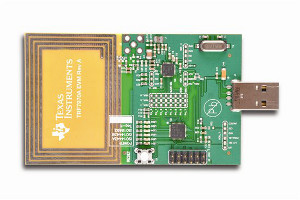The new JN5169 series of wireless microcontrollers from NXP is a range of low-power, high-performance RF microcontroller devices aimed at home automation and remote control, smart energy management, smart lighting and similar Internet-of-Things applications, particularly in consumer products as well as industrial environments.
These system-on-chip devices incorporate an enhanced 32-bit RISC processor and a comprehensive set of analog and digital peripherals along with an IEEE 802.15.4-compliant 2.4 GHz radio transceiver supporting the JenNet-IP, RF4CE and ZigBee Pro wireless networking standards. The 802.15.4/ZigBee network stack includes support for the ZigBee Light Link, ZigBee Smart Energy and ZigBee Home Automation profiles.
The JN5169 platform is Thread and ZigBee 3.0 ready, and it features a new toolchain for software development that offers extensive debugging capabilities while also allowing a reduction of up to 15% in compiled code size.
This family of devices have the ability to connect with up to 250 other nodes in a wireless mesh network, allowing them to be used in a variety of different mesh network and Internet-of-Things applications, from home automation and consumer electronics through to large-scale industrial applications.
There’s three chips in the new family, with different memory configurations to suit a range of applications – such as up to 512 kB of embedded Flash memory, up to 32 kB of RAM and 4 kB of on-board EEPROM. With up to 512 kB of flash on board, there is enough memory available to enable wireless over-the-air firmware updates.
This makes it easy to keep devices up-to-date with new features and security updates without the cost of additional external flash and without the need to replace or remove hardware devices in the field as new software updates are released.
The JN5169 is equipped with hardware peripherals to support a wide range of applications, including an I2C interface, an SPI port which can operate as either master or slave, up to 8 ADC channels with a built-in battery voltage monitor, a temperature sensor and support for either a 100-switch keyboard matrix or a 20-key capacitive touch pad.
The device also incorporates up to 20 digital I/O pins, a 128-bit AES security processor and integrated support for an infrared remote control transmitter, allowing remote control of devices such as air conditioners that use an infrared remote control.
Power use is incredibly low – the JN5169 series offers a very low receive current of just 14 milliamps, or as low as 0.6 micro amps in sleep mode – helping to keep standby power consumption low in household products such as smart lighting and to enable extended operation from small batteries in portable, battery-powered applications.
Furthermore, with a programmable clock speed capability – the JN5169 series can minimise power consumption in power-sensitive, battery-powered applications. Despite these strong energy efficiency features, an on-chip +10dBm power amplifier provides the JN5169 series with a transmission range that is double that of NXP’s existing RF home automation solutions, while drawing just 20 milliamps of current in transmit mode.
This is 40% lower than similar products currently on the market, according to NXP. Antenna diversity is also supported, maximising wireless performance and range while minimising energy use. NXP is also offering a series of new reference designs for network-connected smart lighting solutions based around the JN5169, including white, tuneable white and RGBW colour-programmable Internet-of-Things lighting solutions.

These smart lighting reference designs are complemented by a range of other reference designs from NXP such as wireless switches, wall panel controls, smart plugs, IoT sensors and gateways, along with cloud services for controlling them that will be offered by NXP’s partners, making up a complete Internet-of-Things ecosystem.
Along with the use of the highly integrated JN5819 system-on-chip, these reference designs incorporate innovations such as the use of oscillator crystals rated for 85 degrees C rather than more expensive crystals specified for operation up to 125 degrees C.
Innovative hardware and software techniques incorporated in the JN5819 family allow the clock to be stable in high-temperature environments where these cheaper crystals are used. Design innovations such as these mean that NXP’s JN5169-based smart lighting reference designs have a reduction in total hardware cost of up to 25% compared to similar products on the market.
The JN5169 series also offers innovative solutions to the problem of setting up and commissioning IoT products in a user-friendly and secure way. These devices support near-field communications for device commissioning, making it easy and intuitive to provision new devices and set them up on the network with just a tap on an NFC-enabled smartphone or other device.
Using NFC connectivity for device commissioning is convenient and it also offers security benefits, allowing devices to be easily yet securely paired without broadcasting network details over the air.
This new JN5169 chipset from NXP will offer a new dimension in wireless home automation, and here at the LX Group we’re ready to bring your products to life. Getting started is easy – click here to contact us, or telephone 1800 810 124.
LX is an award-winning electronics design company based in Sydney, Australia. LX services include full turnkey design, electronics, hardware, software and firmware design. LX specialises in embedded systems and wireless technologies design.
Published by LX Pty Ltd for itself and the LX Group of companies, including LX Design House, LX Solutions and LX Consulting, LX Innovations.

